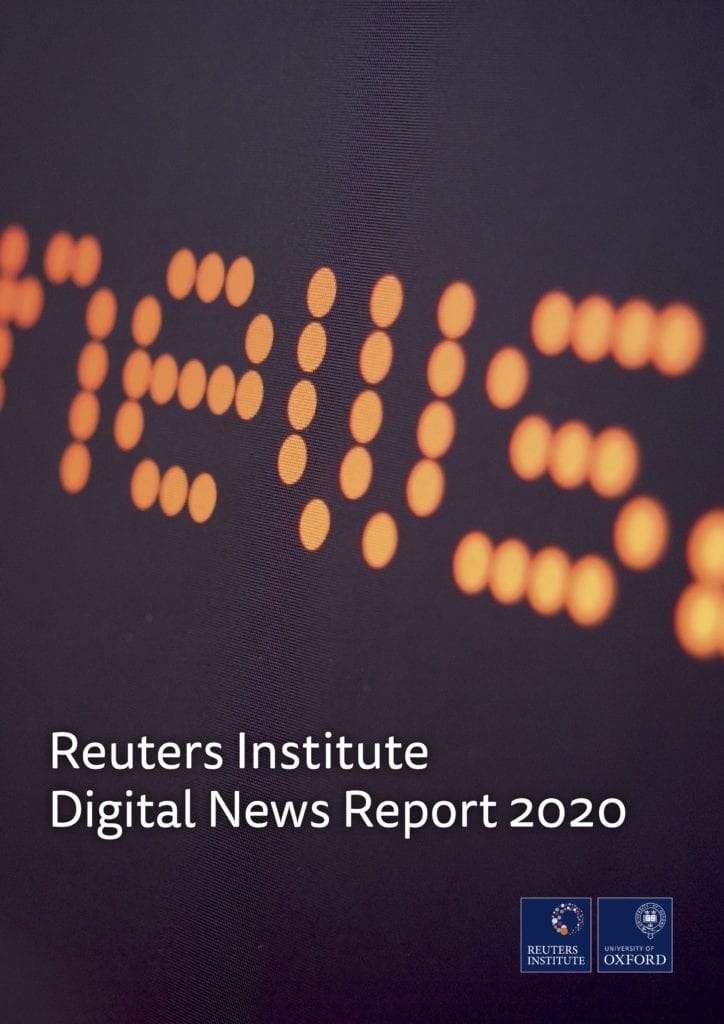|
Getting your Trinity Audio player ready...
|
There has been “significant increases in payment for online news in a number of countries including the US 20% (+4) and Norway 42% (+8),” according to the Reuters Institute Digital News Report 2020.
The report also notes seeing increases in Portugal, the Netherlands, and Argentina. Additionally, the average payment level has gone up in the nine countries being tracked by the Reuters Institute since 2013.
“The most important factor for those who subscribe”
“The reasons for subscribing to an online publication are complex and partly affected by supply-side factors such as the amount of high-quality free news available,” the authors write.
In the United States and especially Norway, many publishers have introduced paywalls, which means more people will be asked to pay – perhaps heightening a sense of scarcity and creating a feeling that news could be worth paying for.
Reuters Institute Digital News Report 2020
“In the UK, by contrast, only a relatively small number of publications try to charge for news,” they add. This could be due to the widespread availability of high-quality free news online from the BBC and the Guardian.
Moreover, a “significant minority in the US (37%) and Norway (38%) take out subscriptions to more than one title – often a local or specialist title in addition to a national one,” according to the report.
The study has found that “the most important factor for those who subscribe is the distinctiveness and quality of the content.”
In both the US and Norway, subscribers believe they are getting better information compared to free sources. Over a third express preference for a particular journalist as a reason to subscribe. While another one-third say a ‘good deal’ would motivate them to do so.
52% of the readers in the US, and 39% in the UK say they want to help fund good journalism. 13% in the US are prepared to pay to get ahead in their job. This reflects in the subscriptions to finance publications like the Wall Street Journal.
Retention rates comparable to Netflix and Spotify
Elements like recipes and crosswords, often bundled in with the core news offer, have also been seen to aid retention as they create a sense of value in subscribers.
These additional elements seem to be particularly valuable for retention as they build habit and are less replicable elsewhere.
Reuters Institute Digital News Report 2020
“Price and convenience are some of the key factors that could make a difference,” the authors add. 30% of the respondents in Norway say they might subscribe if it was cheaper, and 17% say they may consider doing so if offered access to multiple sites from a single payment. Others express interest in family logins like those offered by Netflix or Spotify. Around one in seven across the US, the UK and Norway, say they might pay to avoid intrusive ads.
Further, around 80–90% of the people who are paying for their own subscriptions think they are at least somewhat likely to still be paying for access this time next year. Around half of those who currently have free access say that they might start paying after it expires.
This is encouraging, and perhaps more encouraging still is that these figures imply retention rates that are comparable to those for subscriptions to video and audio streaming services like Netflix and Spotify.
Richard Fletcher, Senior Research Fellow, Reuters Institute for the Study of Journalism
Considering “value of both price and user experience”
“Going forward, news organizations will want to consider these signals about the value of both price and user experience more closely,” suggests Fletcher.
“People often weigh up one media subscription against another and the way news is currently sold does not always fit the requirements for easy, flexible, uncluttered access to multiple sources that people say they would like,” he adds. “Instead, the messaging is often around restrictions and barriers.”
During the pandemic, however, “some publishers have emphasized the value of trusted and accurate journalism through a series of coronavirus-themed messaging campaigns designed to increase subscriptions or donations,” the report states.
The COVID-19 crisis has clearly demonstrated the value of reliable trusted news to the public but also to policymakers, technology companies, and others who could potentially act to support independent news media.
Reuters Institute Digital News Report 2020
Many publications including the New York Times and the Atlantic in the US, and the Guardian in the UK, have seen substantial increases in reader revenue.
“The coronavirus crisis is driving a cyclical downturn in the economy hurting every publisher, especially those based on advertising,” the authors comment. They add, it is “likely to further accelerate existing structural changes to a more digital media environment in terms of audience behaviour, advertising spending, and reader revenues.
“Reader payment alternatives such as subscription, membership, and donations will move centre stage.”
It is too early to predict the full impact of the COVID-19 crisis on the news industry but it is almost certain to be a catalyst for more cost-cutting, consolidation, and even faster changes in business models.
Reuters Institute Digital News Report 2020
The full report can be downloaded here:
Reuters Institute Digital News Report 2020

Read our complete launch coverage of the Reuters Institute Digital News Report 2020
- Digital News Report 2020: 5 must-read charts for publishers
- Email newsletters are resurging, says Reuters Institute
- What we learned about changing podcast consumption, from the Digital News Report 2020
- “Habits continue to become more distributed”: Gateways to news that matter most to publishers, from Reuters Institute
- The “silent majority” want news to be neutral: Insights from Reuters Institute’s Digital News Report 2020
- “Subscription, membership, and donations will move center stage”: Reuters Institute Digital News Report 2020
- Digital News Report 2020: 5 overlooked charts publishers must see



